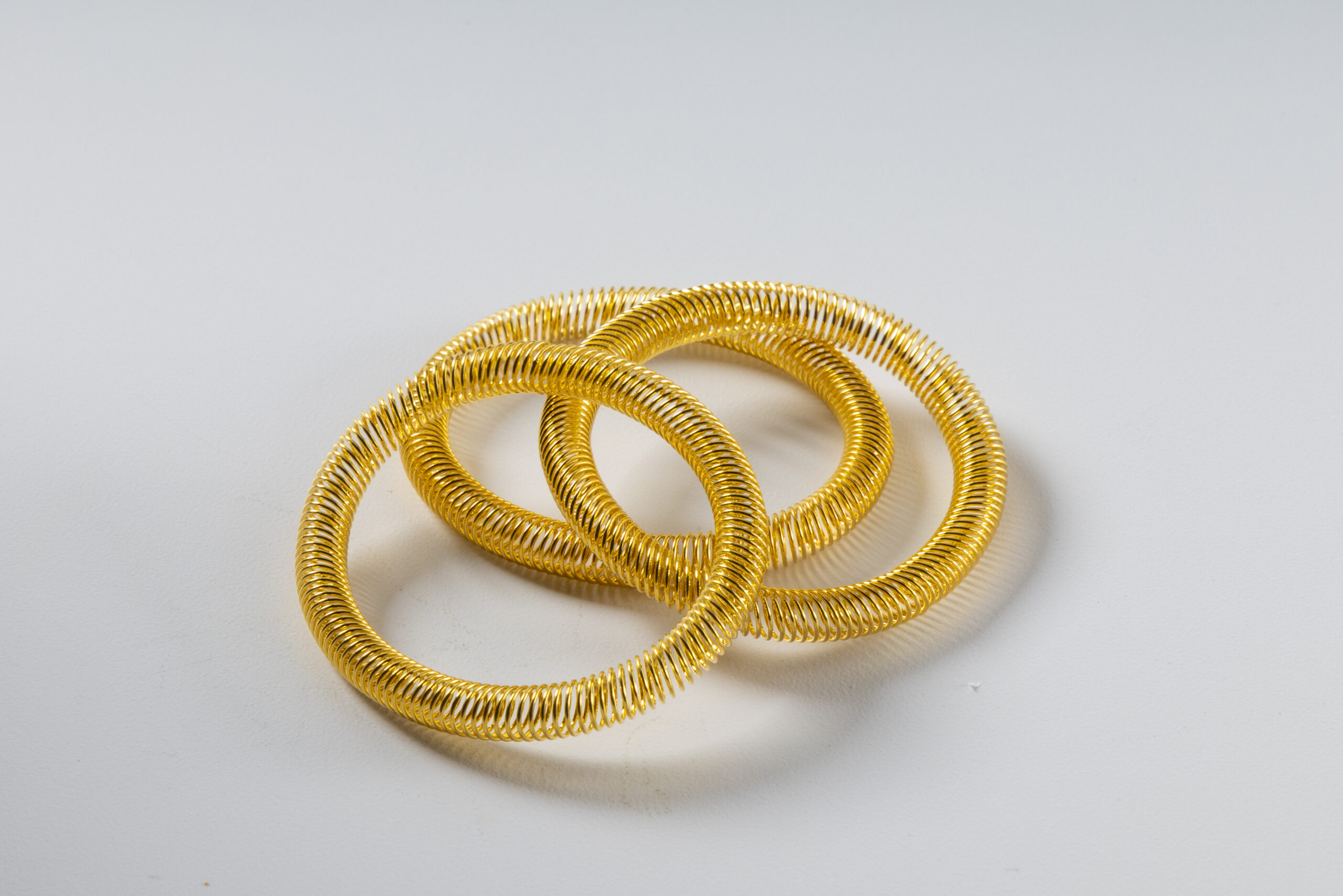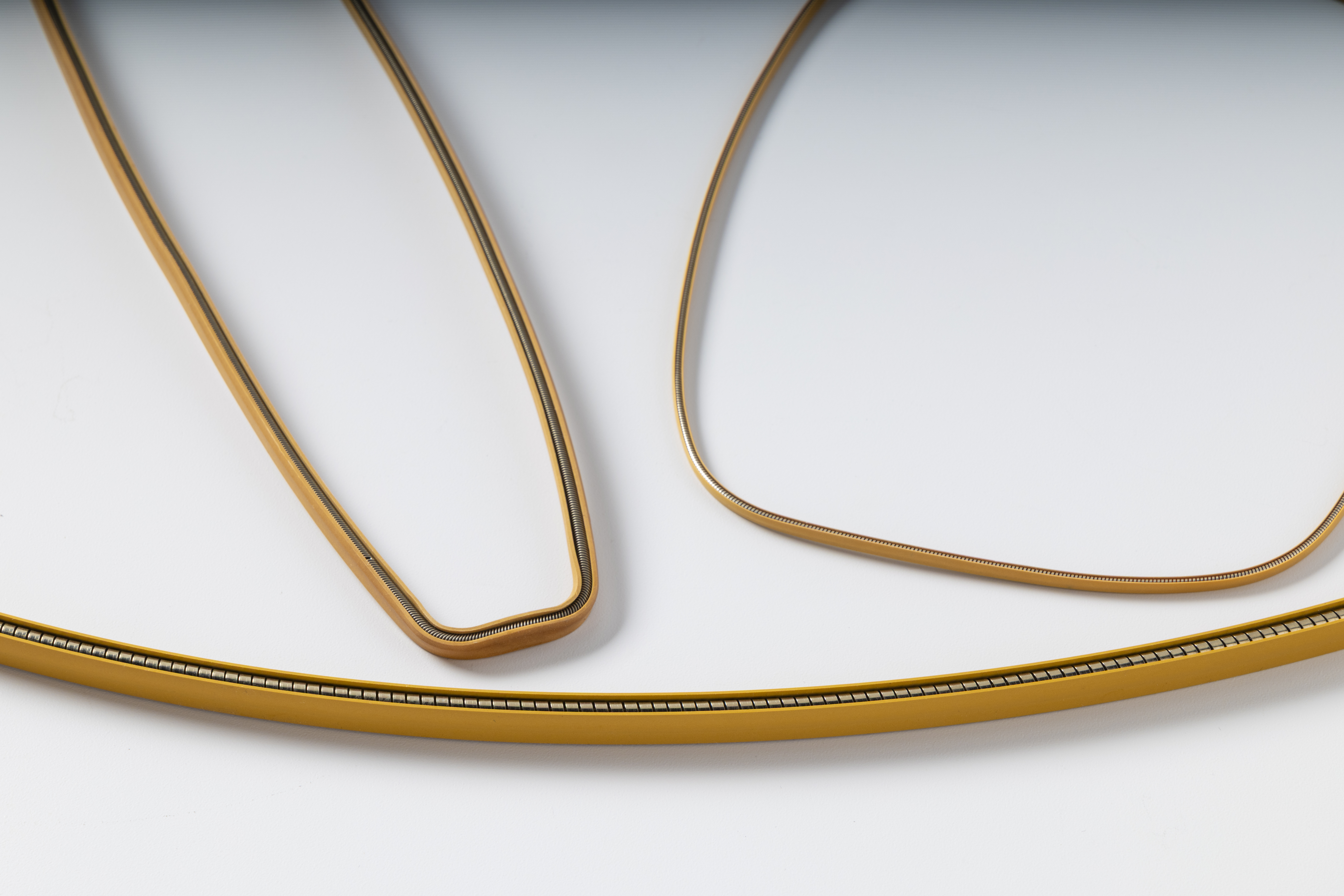
In high-reliability environments, a single faulty connection can bring an entire system to a halt. Consistent electrical connectivity is non-negotiable, whether you’re designing a surgical device, an electric vehicle battery, or a satellite communication module. That’s where canted coil springs—also known as slant coil springs—come into play. These precision components deliver mechanical integrity and electrical conduction in a single compact, customizable form.
This article examines how canted coil springs function, their unique suitability for electrical conduction, and the diverse industries that benefit from their performance.
What Are Canted Coil Springs?
Canted coil springs are helically wound springs with a distinctive slanted coil geometry. Canted coil springs deflect with a predictable radial force rather than compressing along a single axis like traditional springs. This unique construction allows them to maintain uniform, controlled contact pressure—ideal for applications where reliability is key.
Unlike flat or conical springs, canted coil springs generate contact at multiple points along their circumference. This design makes them incredibly versatile. In fact, engineers commonly used canted coil springn applications requiring precise force control, EMI shielding, secure mechanical latching, and, crucially, electrical conduction.
Canted Coil Spring and Electrical Connectivity: How It Works
An electrical connectivity application typically places a canted coil spring between two conductive surfaces, such as a connector housing and contact ring. The spring’s slanted coils deflect slightly, pressing outward or inward to maintain multi-point contact between the mating surfaces.
This contact redundancy provides a consistent low-resistance electrical path, even under vibration, thermal cycling, or slight misalignment. The result is a stable current transfer mechanism with excellent signal fidelity and minimal wear.
By distributing the conduction path across many points, the spring avoids the pitfalls of single-contact systems, such as localized arcing or overheating. Engineers can tune the spring to achieve desired contact forces and electrical resistance values, tailoring performance to the specific demands of the application.

Why Canted Coil Springs Outperform Traditional Contact Solutions
Compared to conventional conduction components—like pin contacts, blade terminals, or rigid busbar interfaces—canted coil springs offer distinct advantages:
- Multi-point redundancy: Reduces the risk of contact failure due to contamination, vibration, or misalignment
- Consistent contact force: Prevents arcing, overheating, and wear at the contact interface
- Flexible integration: Adapts to tight design envelopes and dynamic mating conditions
- Long service life: Durable construction and reliable deflection characteristics extend operational lifespan
These factors make canted coil spring conduction particularly attractive for mission-critical applications where downtime or signal loss is unacceptable.
Industries and Applications
The versatility of canted coil spring conduction spans multiple sectors:
- Medical Devices: Reliable electrical contacts in surgical tools, implantables, and diagnostic equipment
- Aerospace & Defense: EMI-shielded connectors and vibration-tolerant current paths in avionics and satellites
- Electric Vehicles: High-density spring contacts in battery modules, charging systems, and control electronics
- Industrial Automation: Rotating interfaces and slip rings in robotic arms and sensors
- Telecom & Data Centers: Compact, high-frequency electrical connectors for server and communication hardware
Each industry depends on secure, repeatable electrical connections in environments where failure is not an option. Advanced EMC canted coil spring products can benefit each one.
Conclusion
Canted coil springs provide more than just mechanical support—they deliver consistent, low-resistance electrical conduction in compact, high-performance applications. Their multi-point contact design offers superior reliability, adaptability, and durability when compared to conventional contact solutions.
For engineers and decision-makers across various industries, canted coil spring conduction provides an innovative, scalable solution for meeting challenging electrical interface requirements. Explore Advanced EMC’s complete line of slant coil spring technologies to discover how precision connectivity can elevate your next project.














